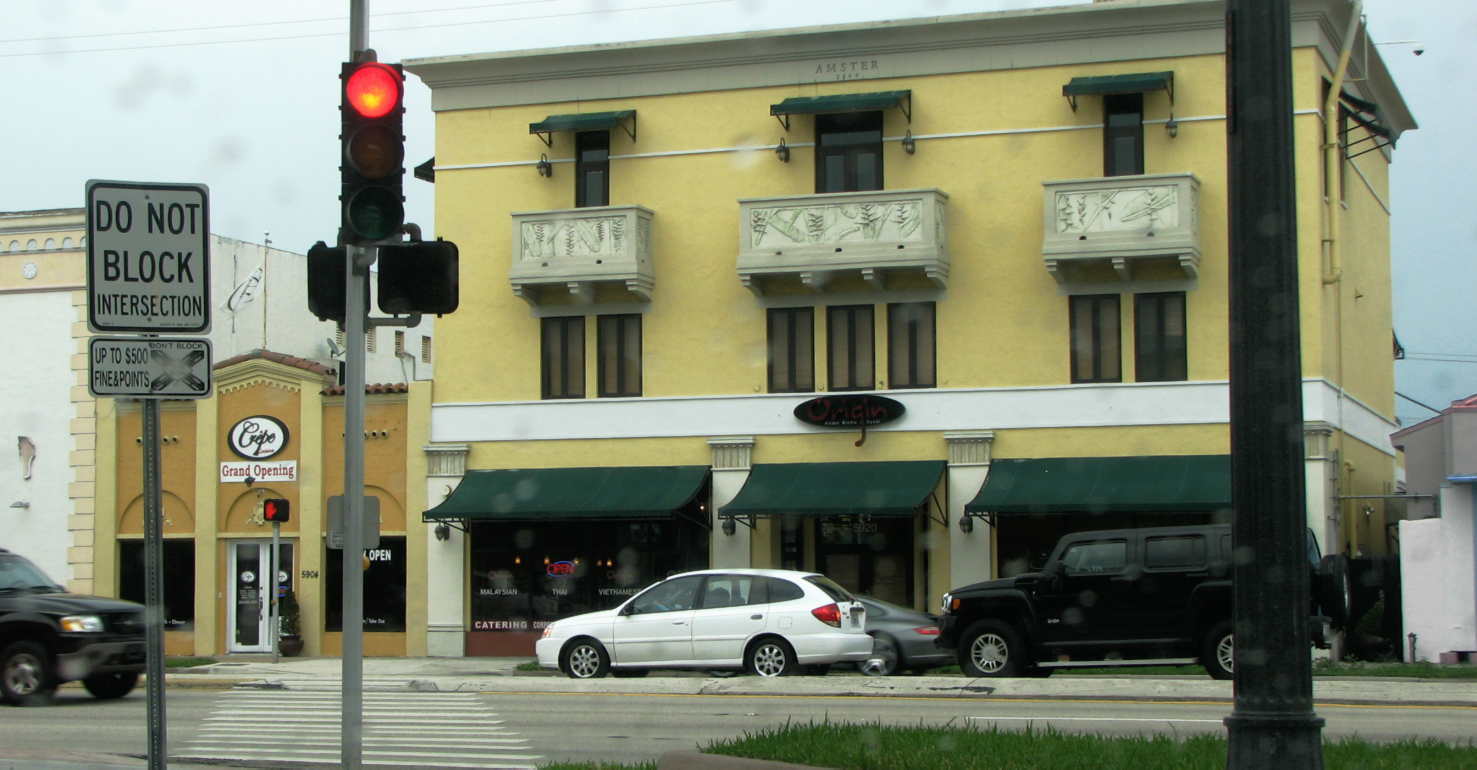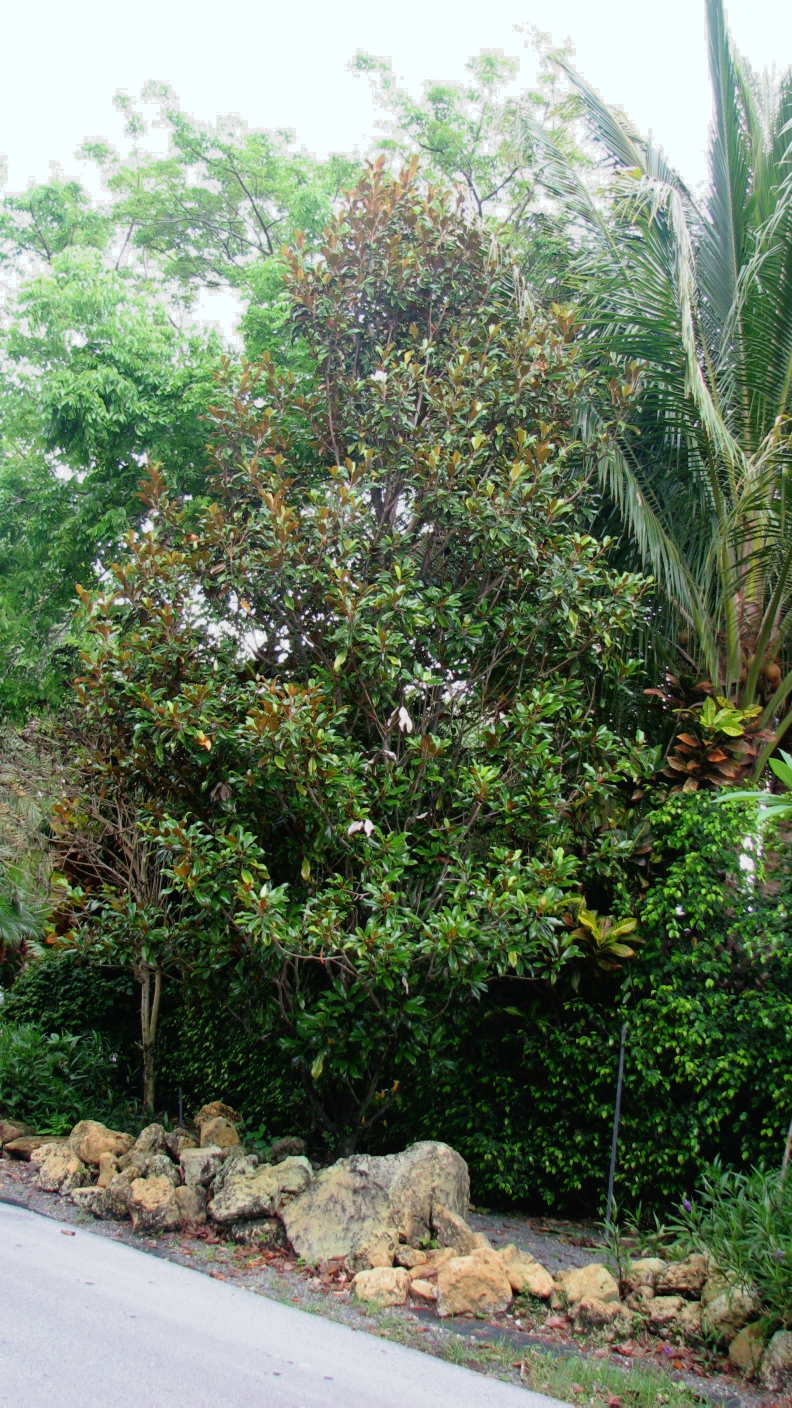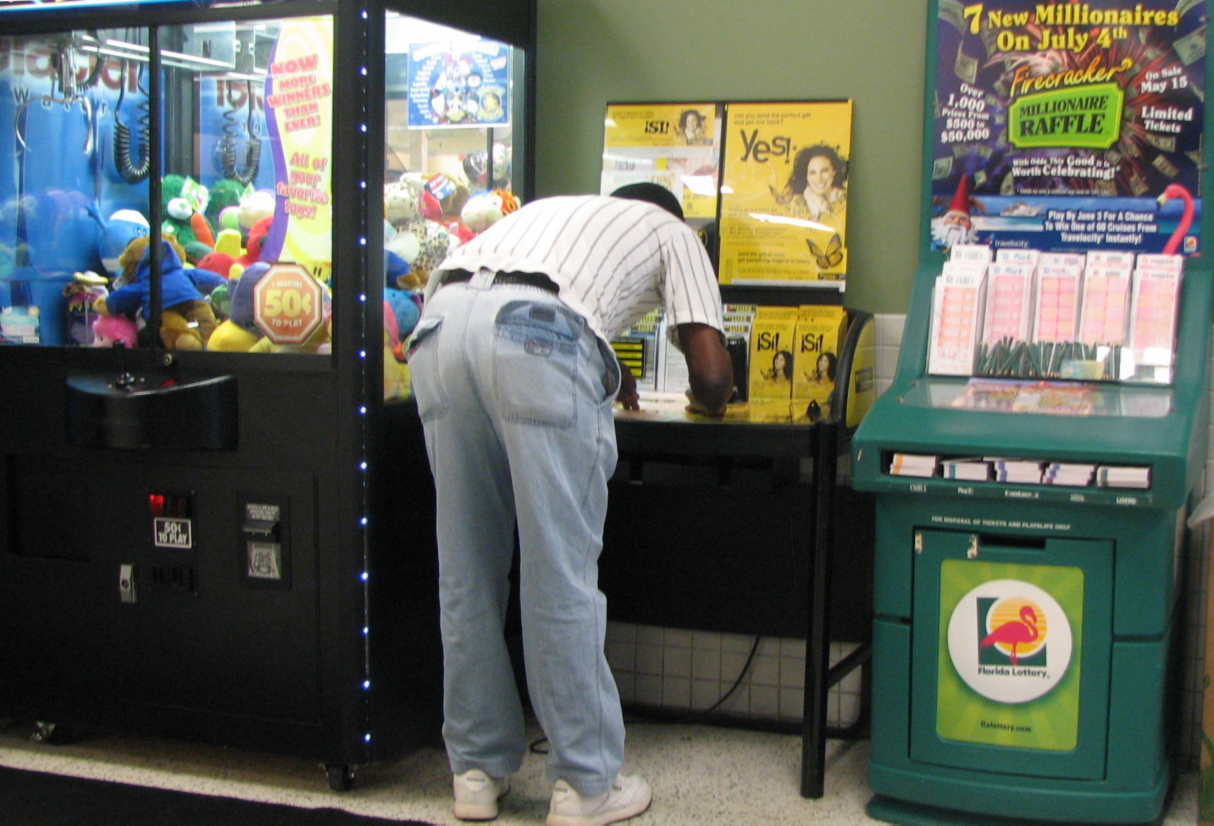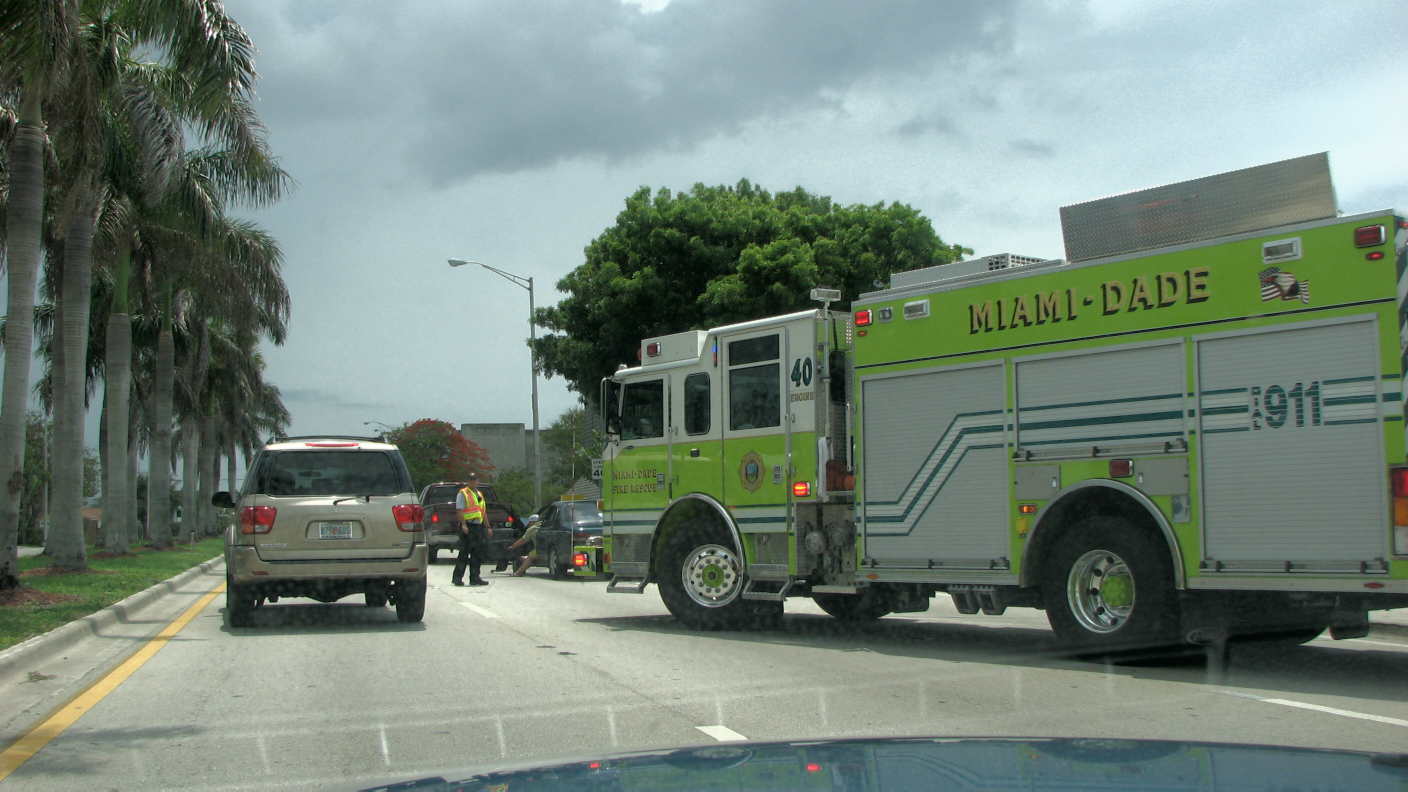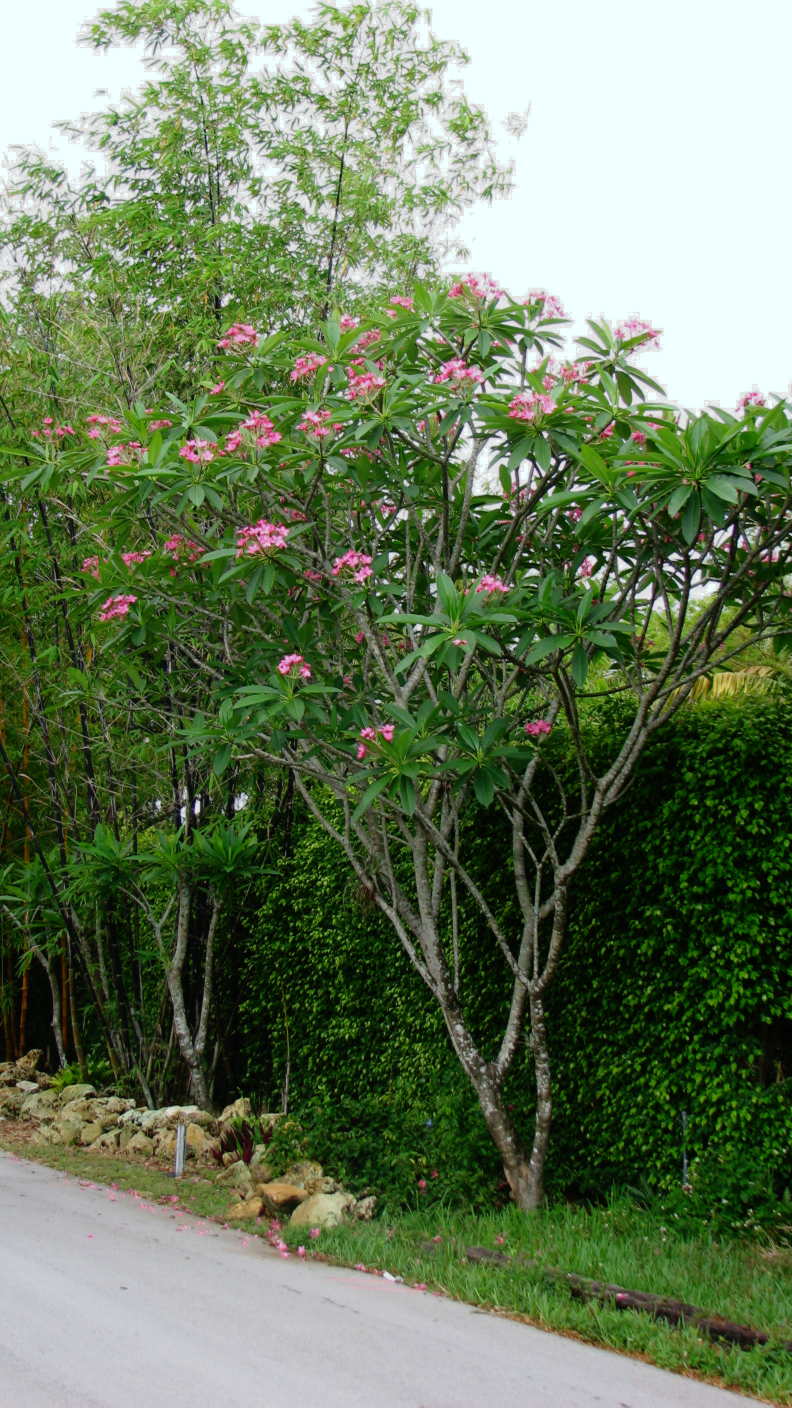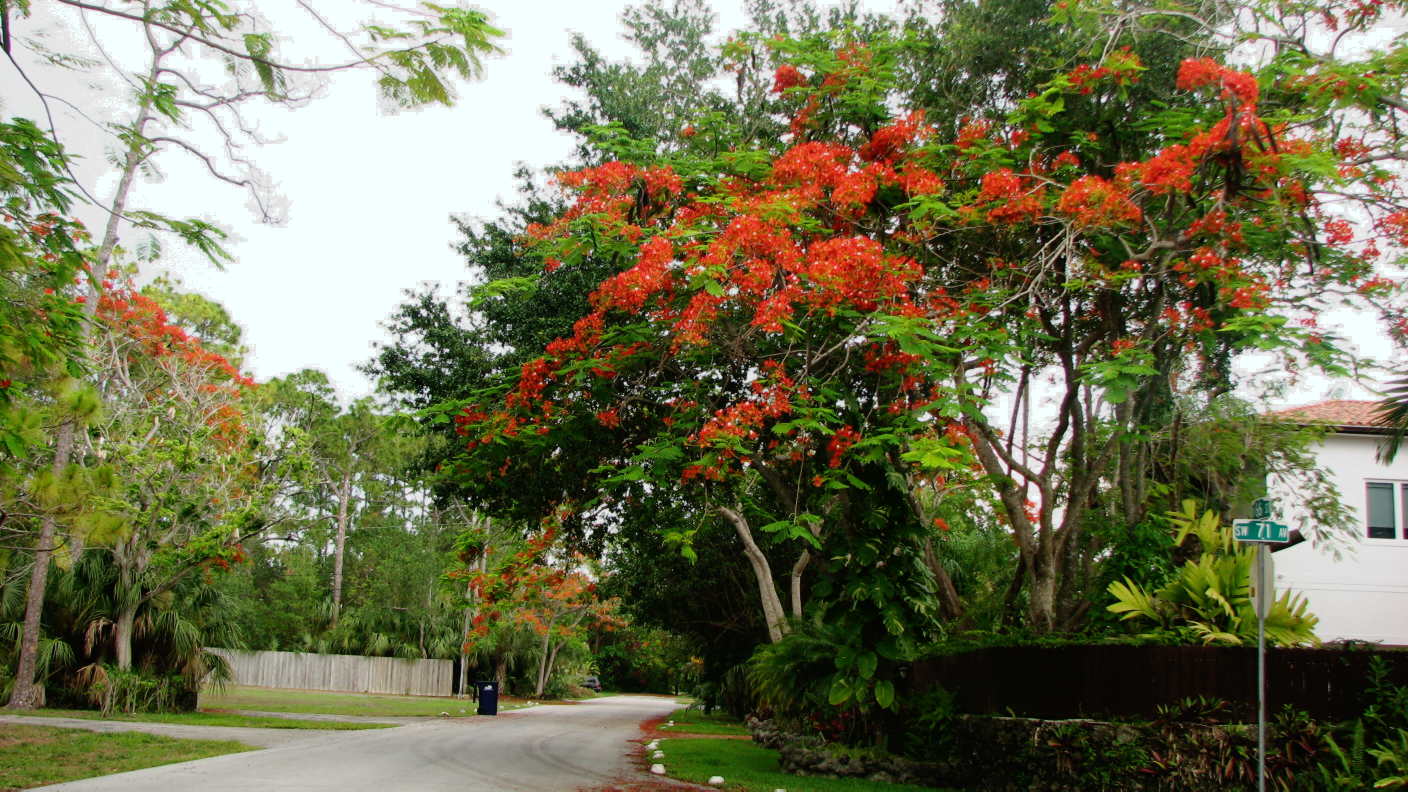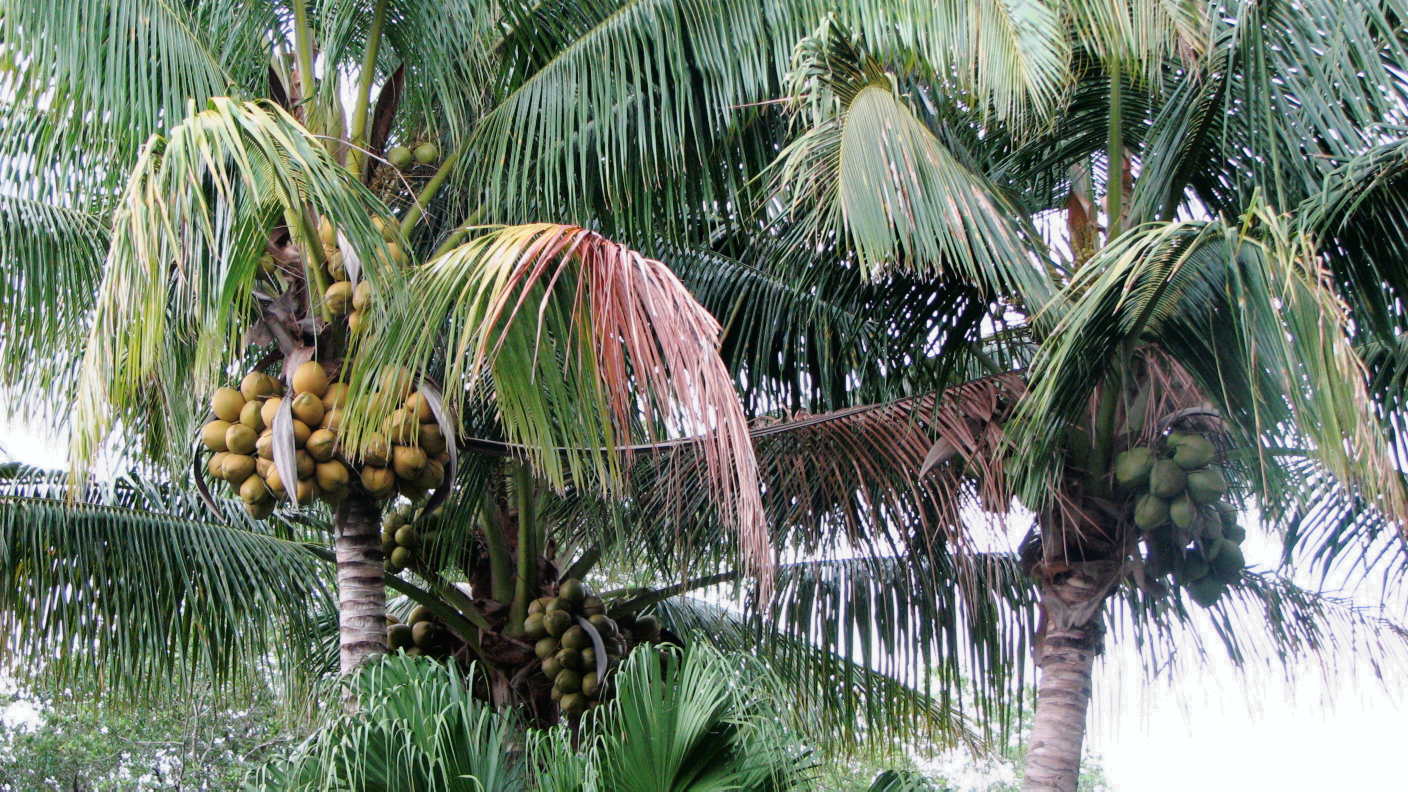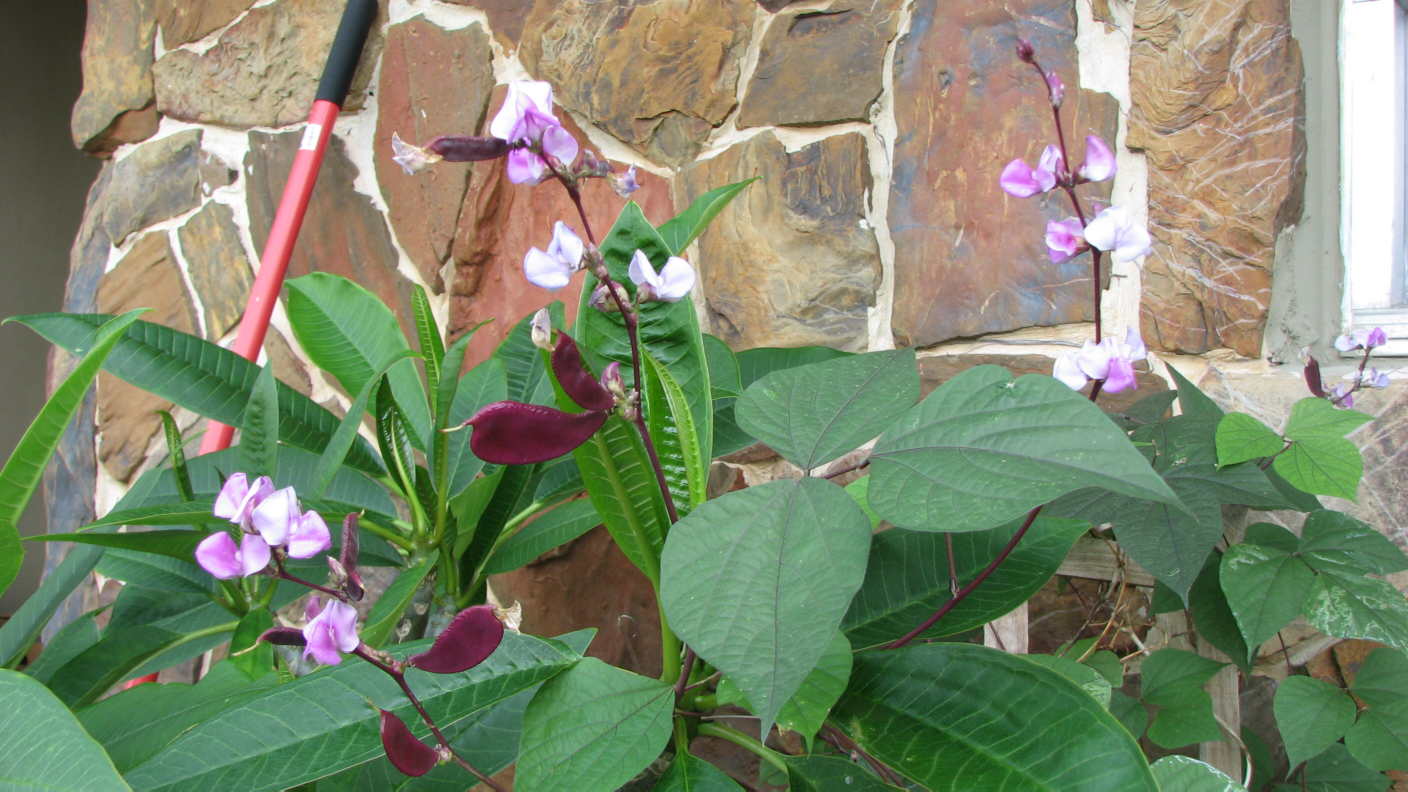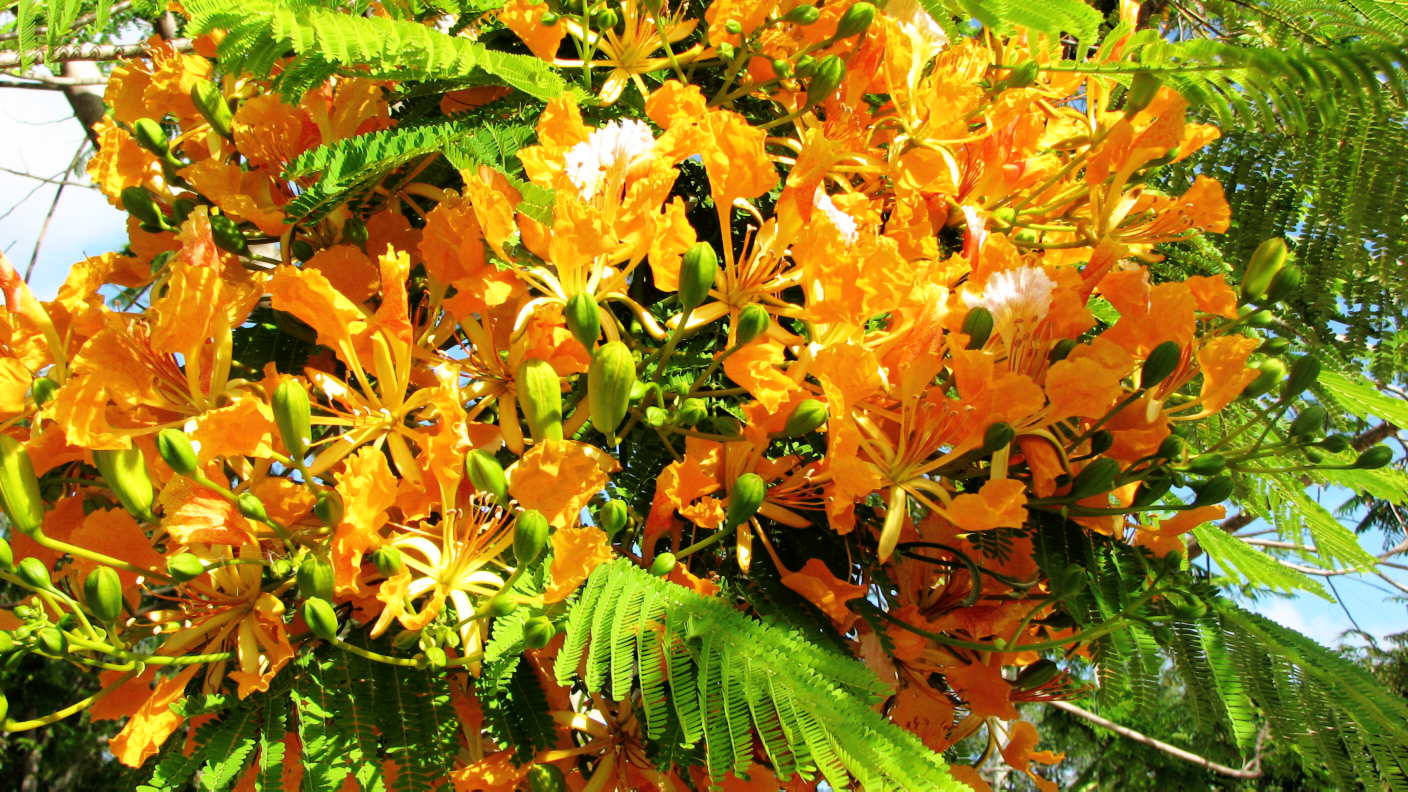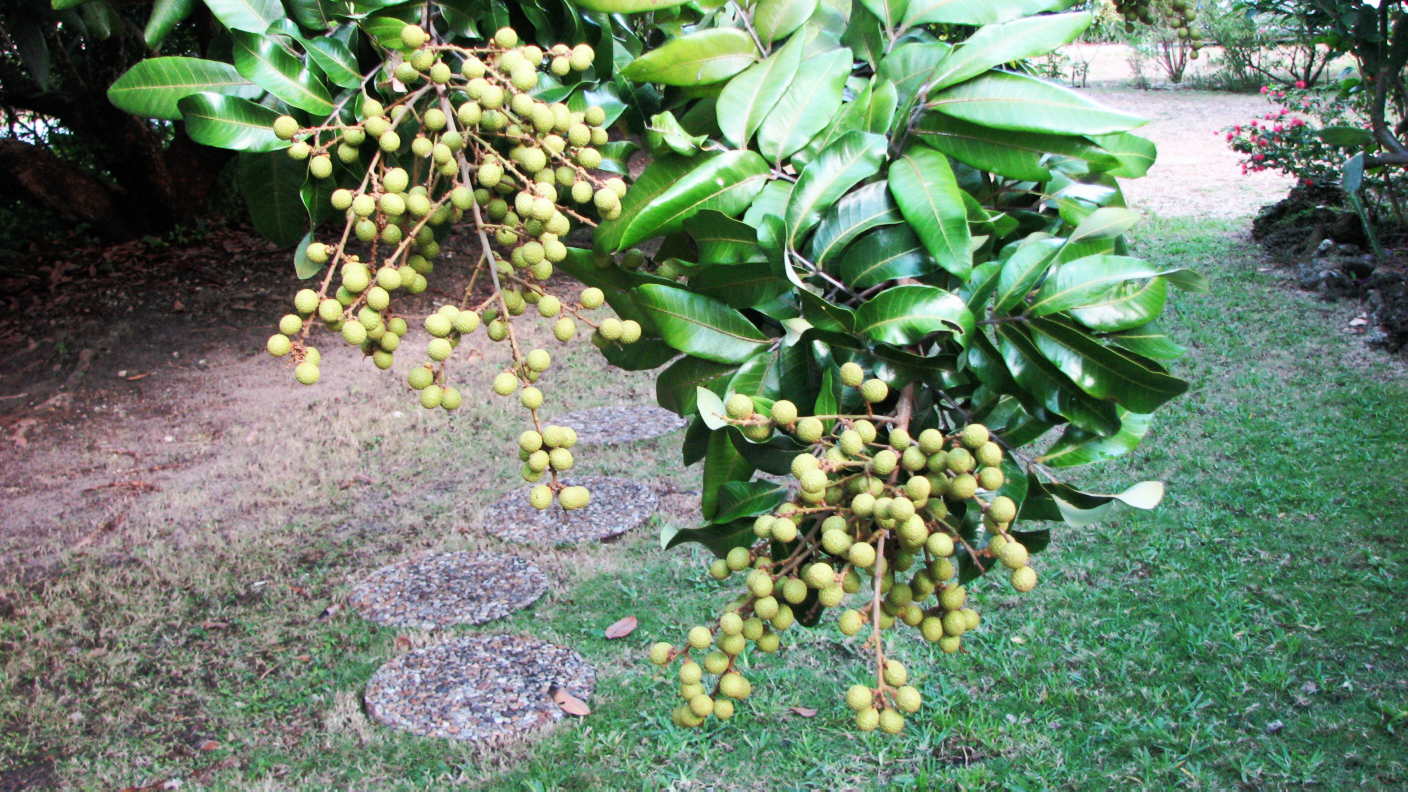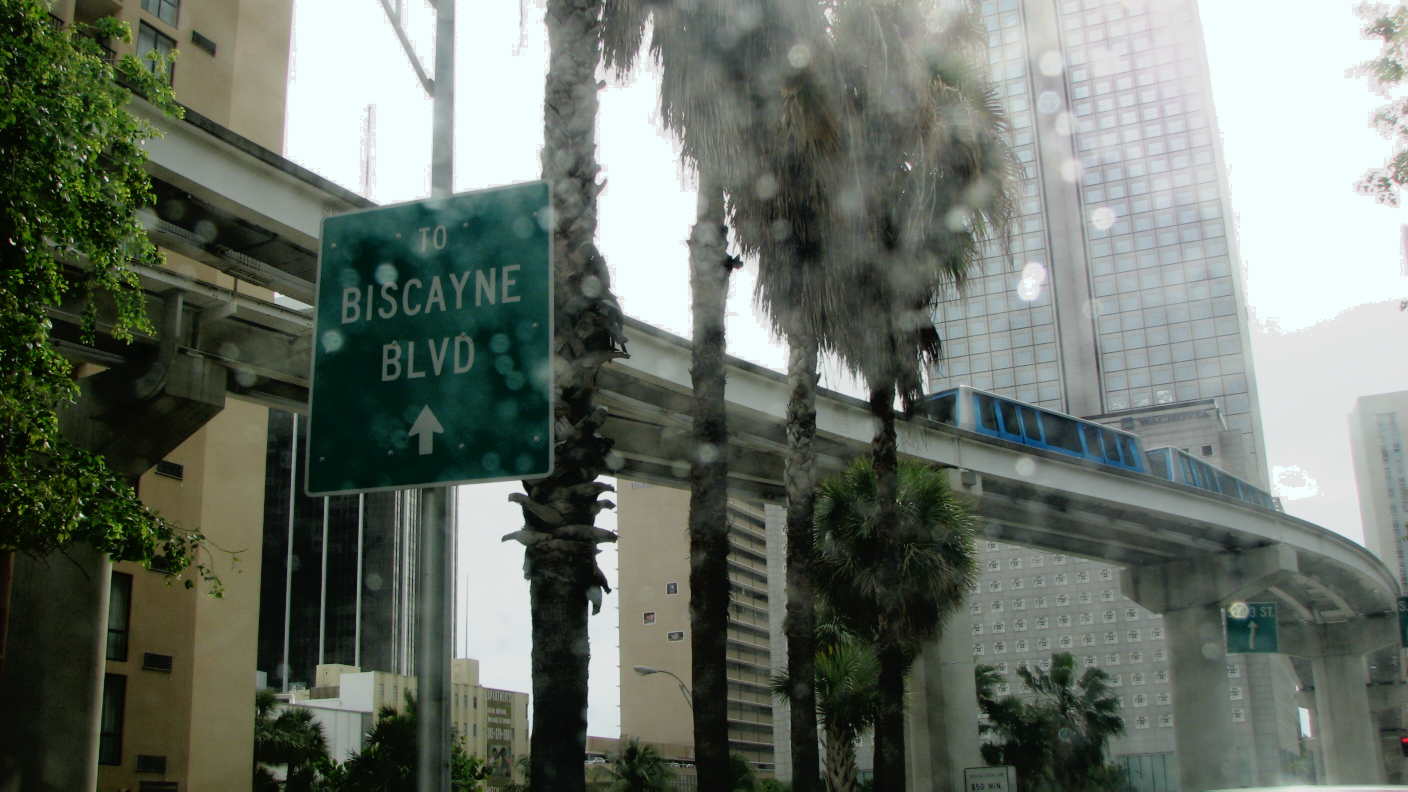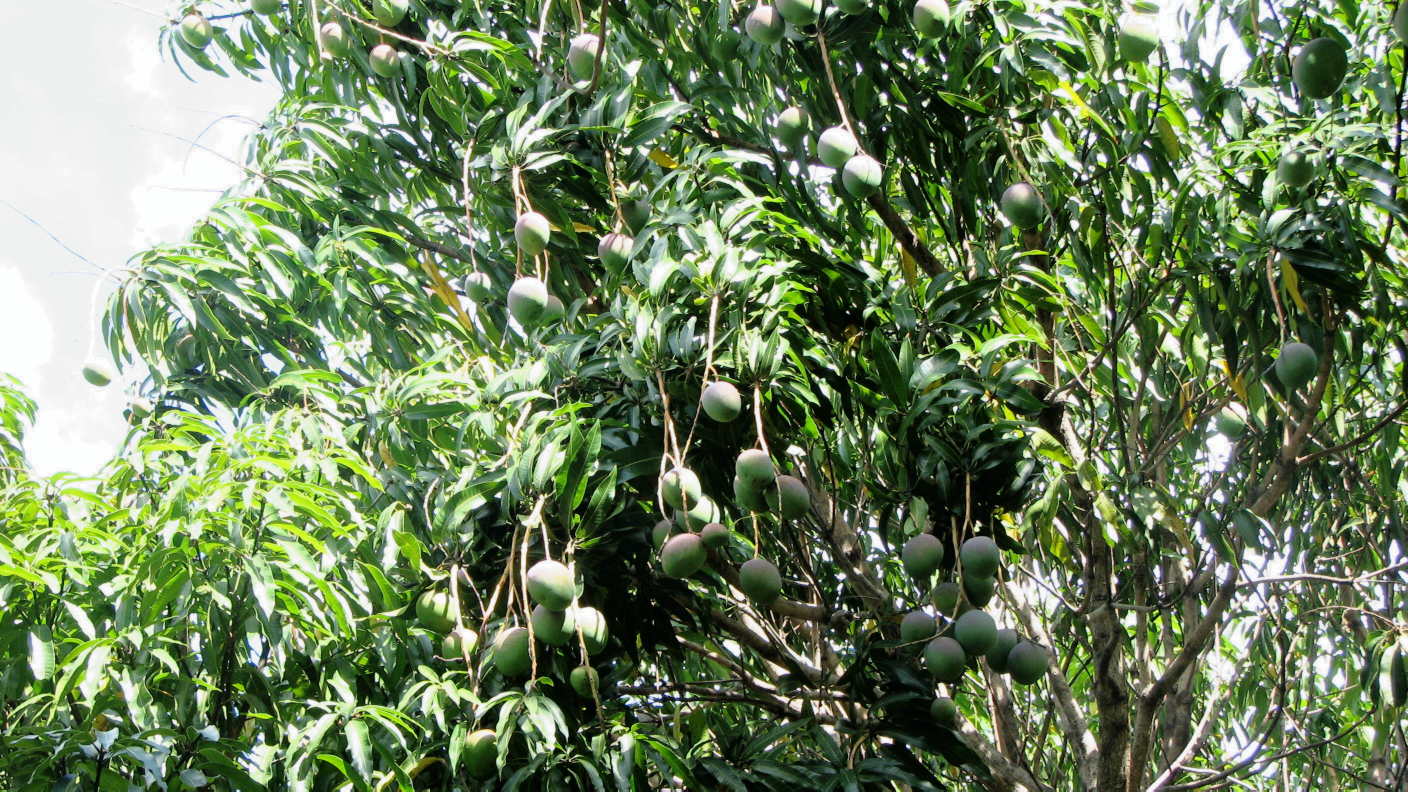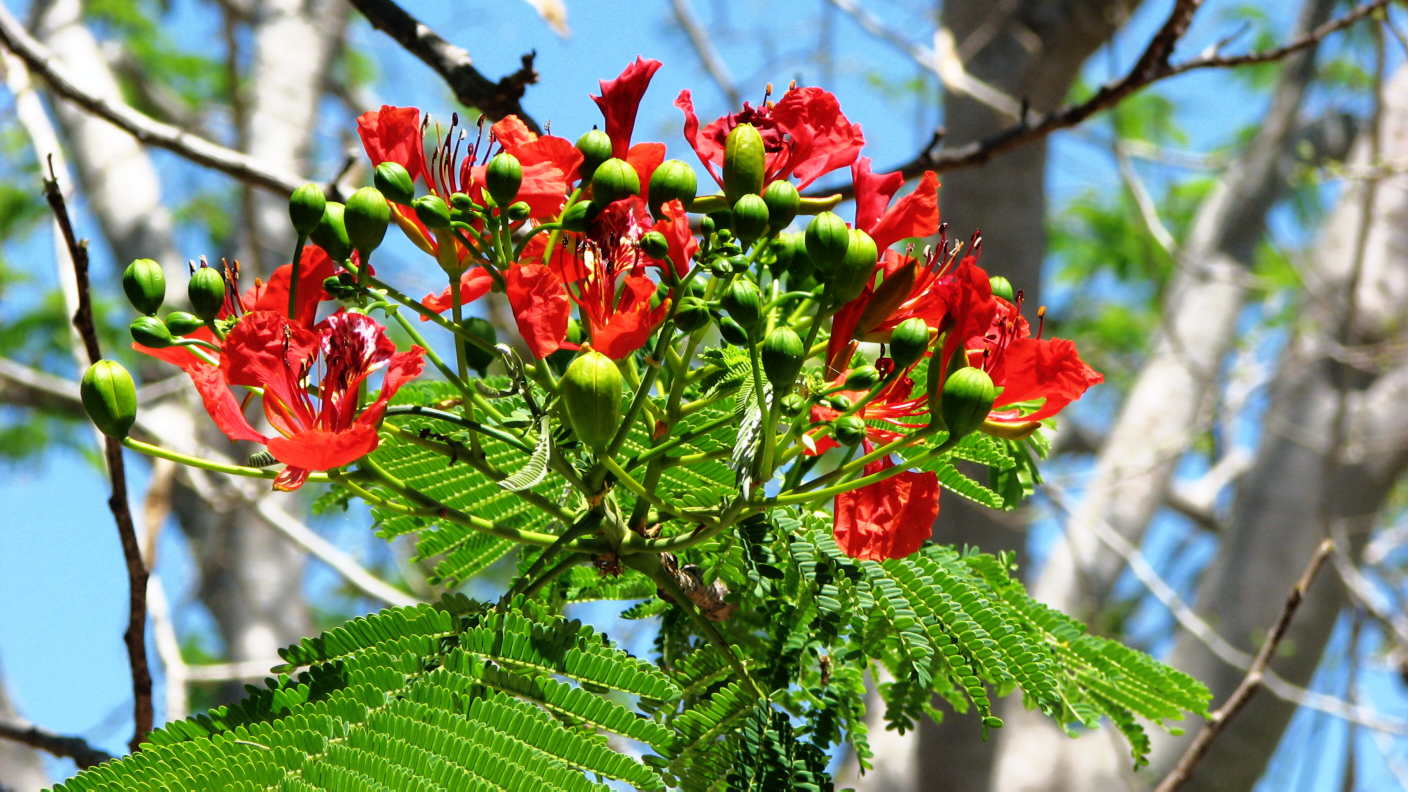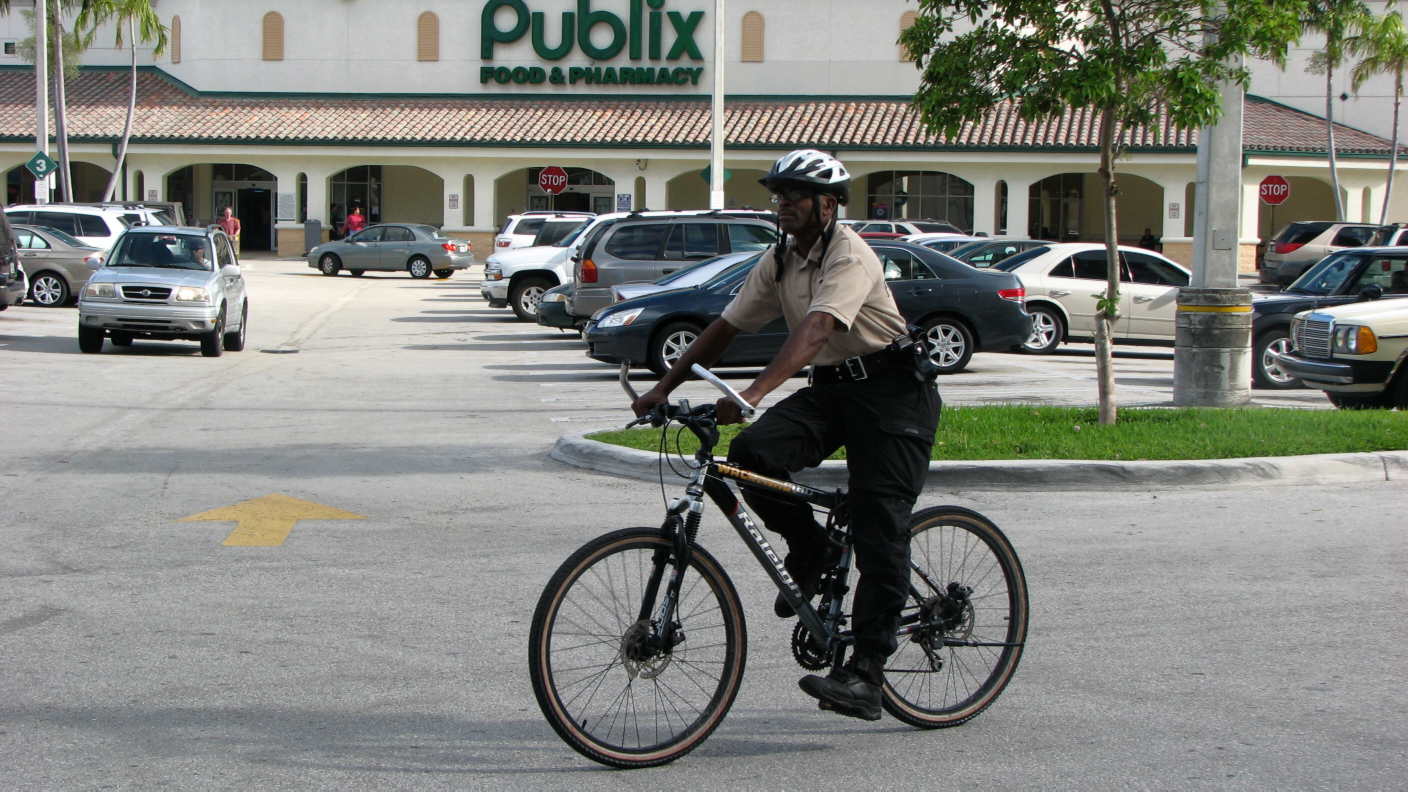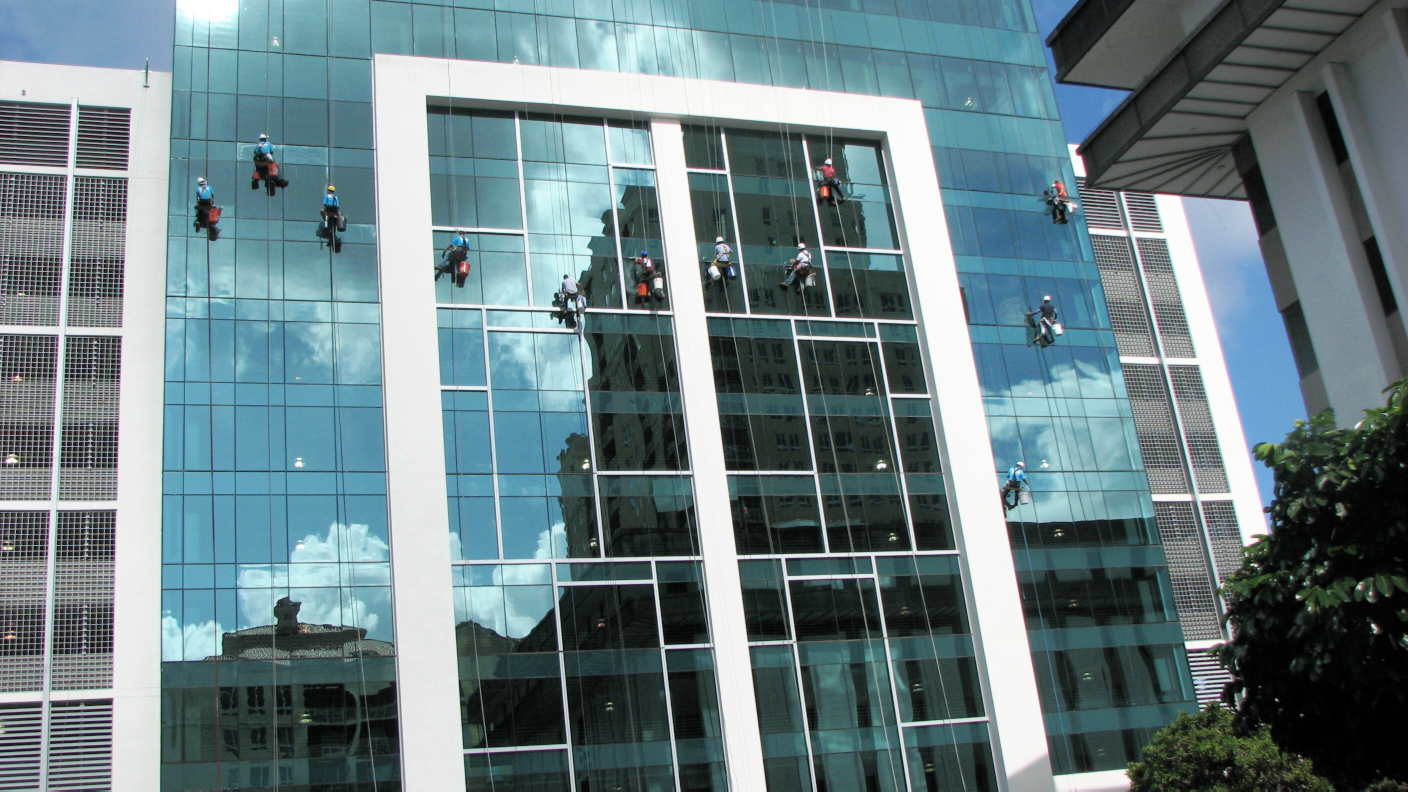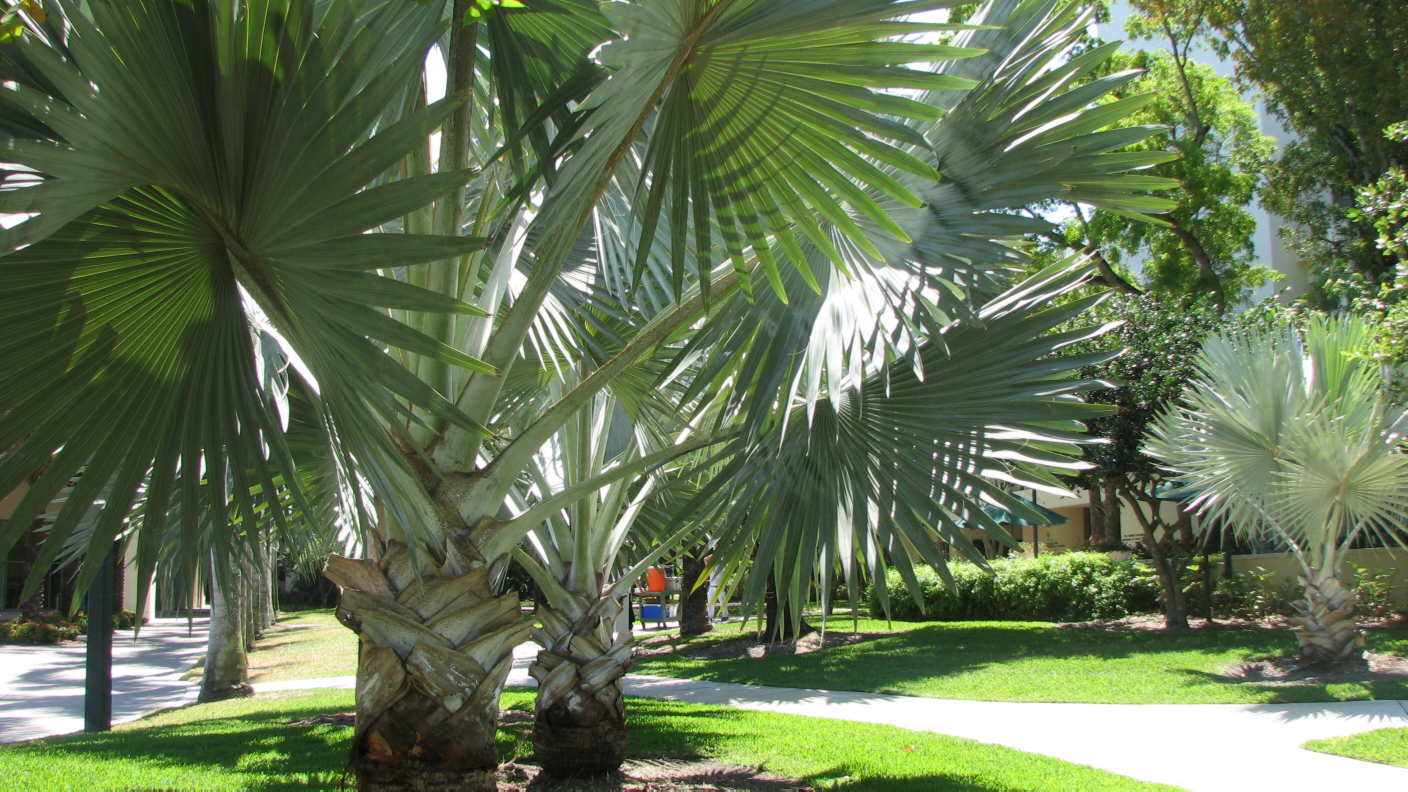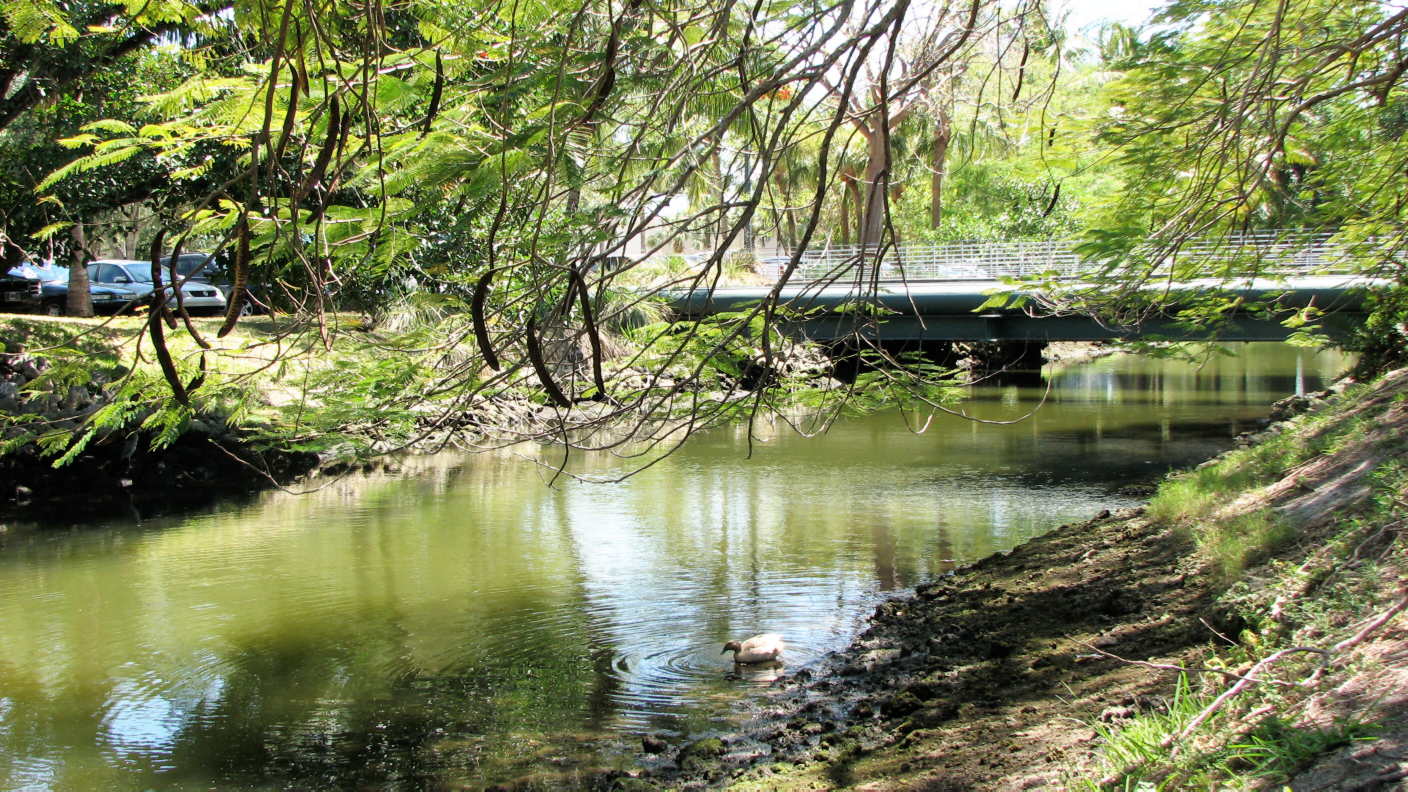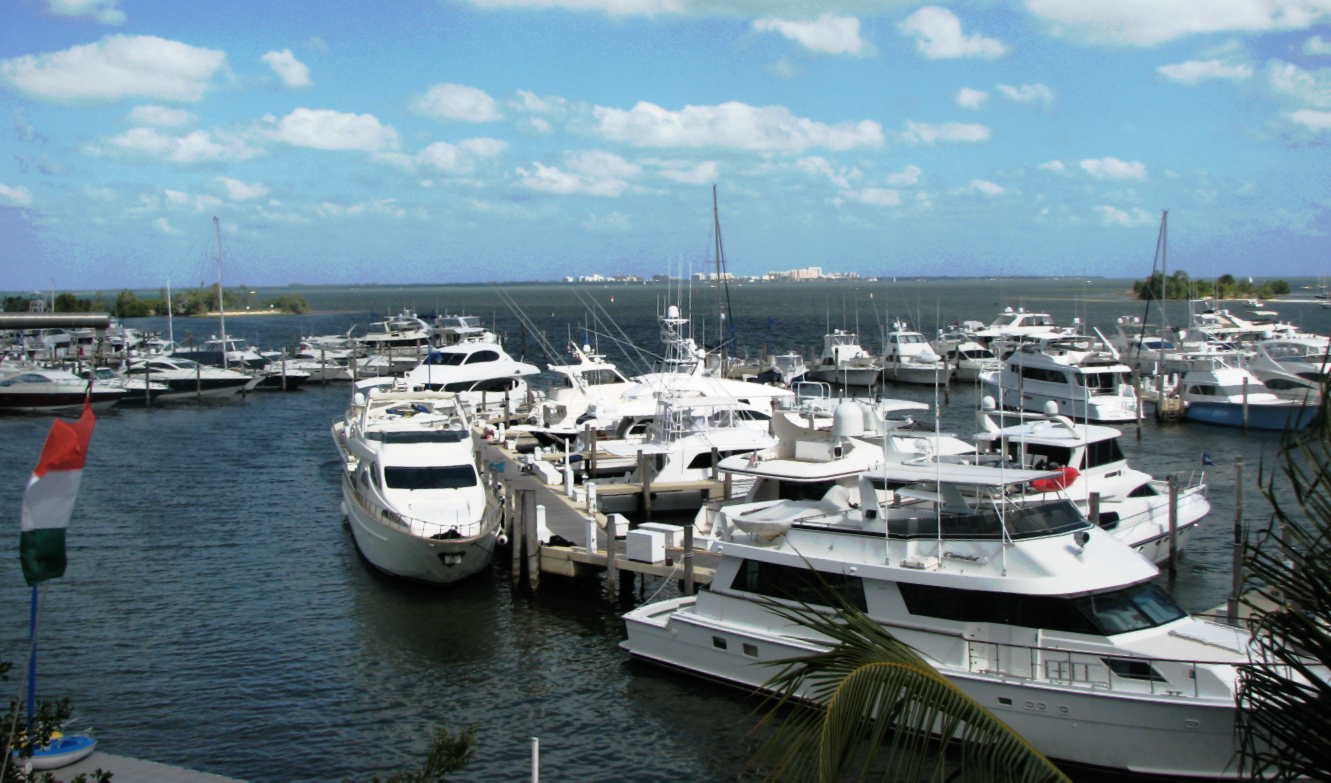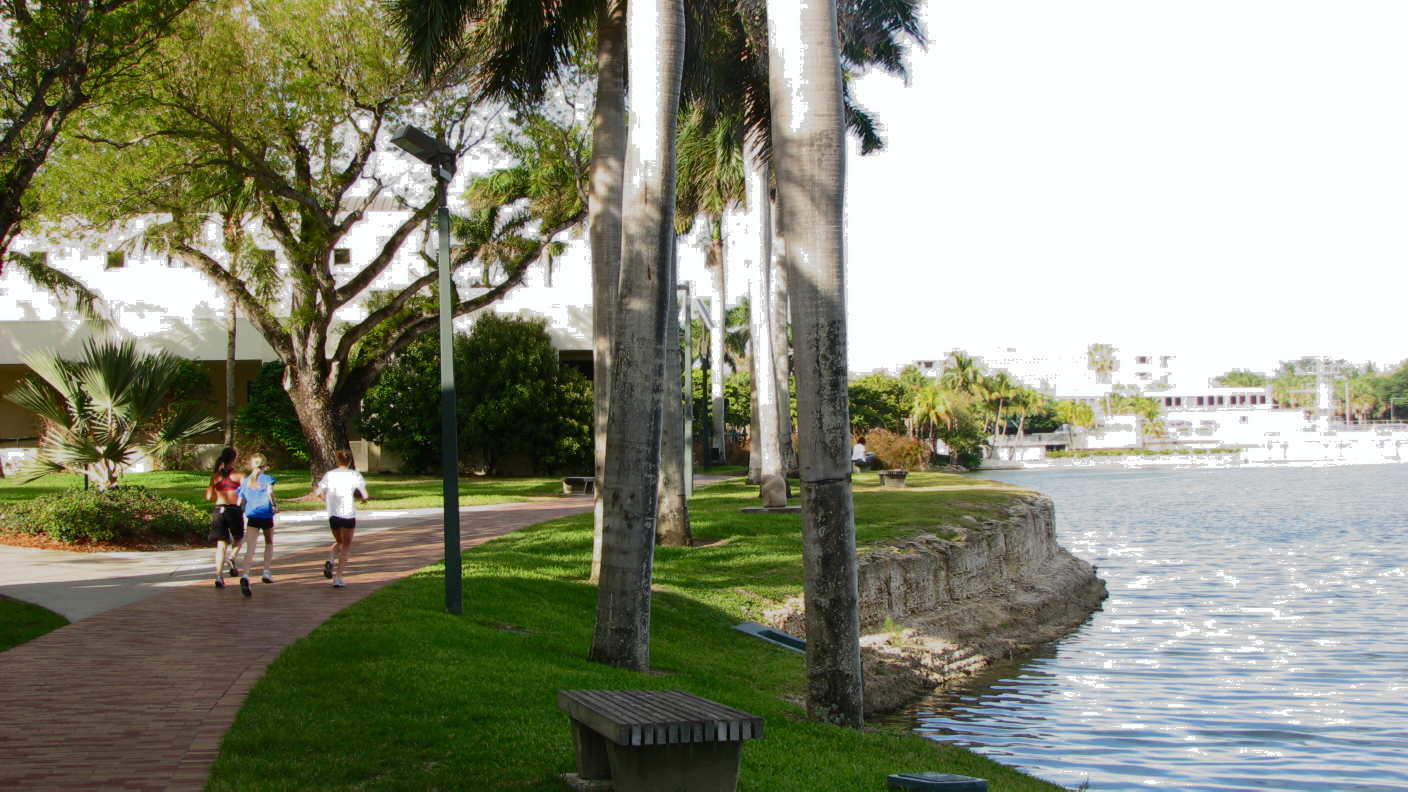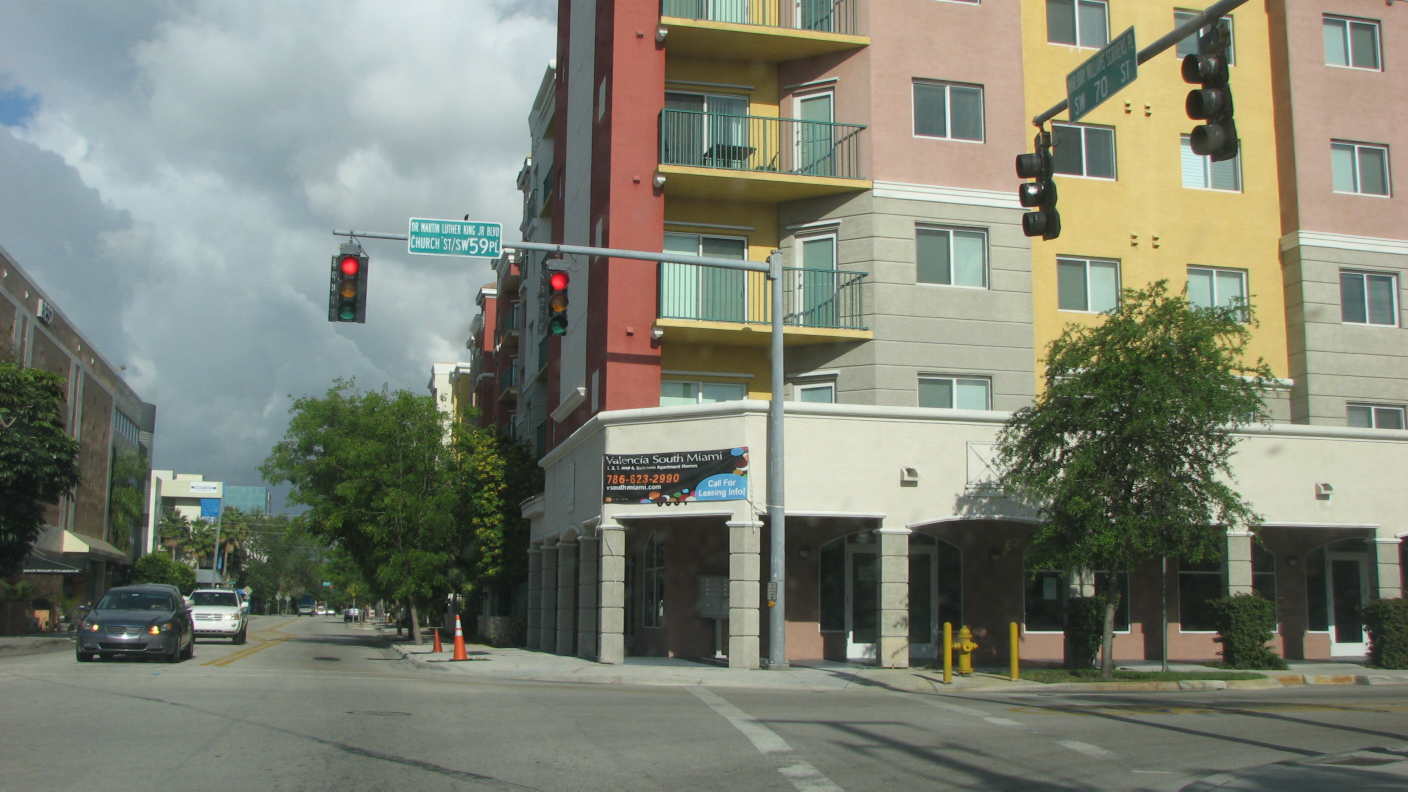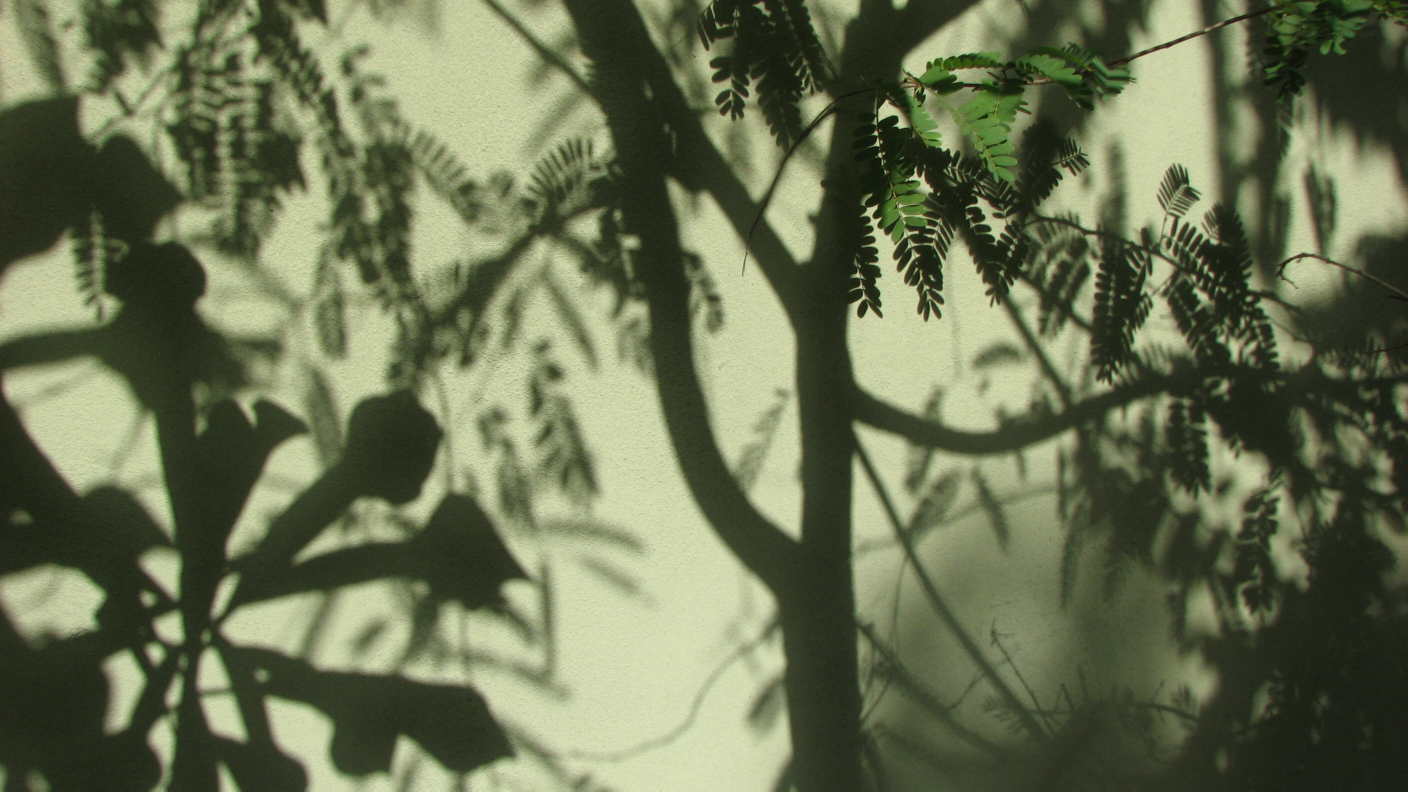Ficus pumila, from the family of Moraceae (mulberry family) is native to China, Vietnam, and Japan. It has an alternate name of Ficus repens, and is commonly known as climbing or creeping fig. Tog has shown this vine on his blog, but this photo shows you how a big building such as the Sunset Place in Miami can be covered with a thick green blanket. Notice that the two palm trees are also invaded by this vine. Somehow, these palms are trying to get away from the walls, to no avail!
This aggressive but beautiful evergreen vine is a relative of the edible fig, Ficus cariaca, but bears little resemblance to its cousin. Creeping fig is an enthusiastic climber able to scramble up vertical surfaces 3 and 4 stories tall with the aid of a powerful adhesive. This vine coats surfaces with a tracery of fine stems that are densely covered with small heart shaped leaves that are 1 inch long by about .75 in (2 cm) wide, they are held closely to the surface creating a mat of foliage that extends barely 1 in (2.5 cm) from the surface. These are the juvenile leaves. Once the vine has reach the top of its support it will begin to form horizontal branches on which adult foliage is borne. Adult leaves are held alternately in two rows along these branches. They are more leathery than the juveniles, and are dark green, and about 3 in (7.6 cm) long by 2 in (5 cm) wide. The fruit is a fig. These are borne only on the horizontal stems, they are pale green in color and about 3 in (7.6 cm) long by 2.5 in (6.4 cm) wide.
Do not plant near wooden structures as these surfaces are damaged by the adhesive produced by the vine. Consider this a high maintenance plant when grown on structures as pruning will be required several times a year to remove growth from windows, roofs, etc. as the vine relentlessly coats everything it encounters in a green blanket. Yes, it will enter your home and invade the interior too if left to its natural course. If that happened to you, a glyphosate herbicide application will kill this creeping vine to the ground, leaving a giant mess for cleaning up. Finally, this plant made it to several scientific publications reporting on poisonous or hazardous plants. At the least, it was found that this fig ivy causes irritation to the skin and eyes.
I wonder... if allowed to take over a roof, will it stop leaks and reduce cooling cost in Miami??? Nah! It will invade the roof crawl space for sure! Bad idea!

